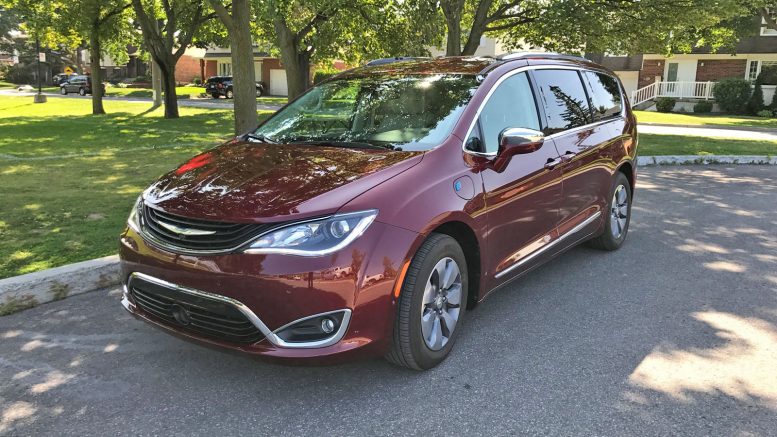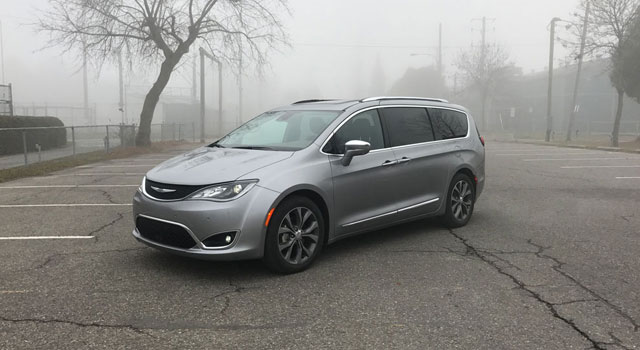Chrysler pioneered the first minivan way back in 1983 and has been the standard bearer in the segment ever since. That holds true even with today’s Dodge Caravan which was supposed to be discontinued last year but the company decided to keep it around for a while longer due to strong sales. About 70% of Canadian minivan sales are Grand Caravans alone. It’s one of the rare moments I’ve seen where demand has gotten in the way of corporate re-branding.
You see, FCA (Fiat Chrysler Automobiles) wants Dodge to be selling sports cars not minivans. The company had released the Pacifica as a replacement for both the Caravan and more upscale Chrysler Town & Country at last year’s Detroit Auto show but that darn Caravan was such a good family hauler at a reasonable price and people kept buying it. I can’t say I was thrilled by the attempt to bid adieu to the days of the $20,000 family hauler because as a Caravan owner myself, the lower price of the vehicle compared to most SUVs was a big plus for me.
[ngg_images source=”galleries” container_ids=”829″ display_type=”photocrati-nextgen_basic_thumbnails” override_thumbnail_settings=”0″ thumbnail_width=”100″ thumbnail_height=”75″ thumbnail_crop=”1″ images_per_page=”90″ number_of_columns=”0″ ajax_pagination=”0″ show_all_in_lightbox=”0″ use_imagebrowser_effect=”0″ show_slideshow_link=”0″ slideshow_link_text=”[Show as slideshow]” ngg_triggers_display=”never” ngg_proofing_display=”0″ order_by=”filename” order_direction=”ASC” returns=”included” maximum_entity_count=”500″]All of that aside, the new Pacifica is leaps and bounds ahead of what was already a great product. It has little in common with the outgoing models, having been completely re-designed from the ground up on a new platform.
The new design language lends itself nicely for a minvan with flowing lines and an attractive silhouette. The Pacifica’s sliding door track lines are hidden under the rear-quarter side glass, making them almost invisible. With its long wheelbase, wide track, low stance and the optional 20-inch wheels, the Pacifica has a sporty aura – as much as is possible for a minivan.
Chrysler has made the body structure stiffer and it’s something I noticed right away. My old Caravan drove like a van but this new Pacifica drives more like an SUV than any other van I’ve experienced. It does so even with an added 400 lbs compared to the Caravan which is a testament to how much improved the suspension is.
The interior of the Pacifica is also light years ahead of its predecessor in terms of look, comfort and functionality. The dashboard layout is pleasing to the eye with a beautiful black piano finish and stitched leather surfaces. Same thing for the two-tone leather steering wheel which is something I’d expect to find in a luxury vehicle. The controls are effortless to operate and perfectly placed though not the highest quality. There is a new way to shift gears and that is by way of a rotary dial. It frees up space on the dash and is fairly easy to get used to though so it’s not the end of the world.
The Stow ‘n Go operation is improved and even comes with a button on the B-pillar to advance the front seat in order to complete the operation (trust me – this is huge). The interior is very spacious and comfy with many notable improvements including five places where you can attach a baby seat with the LATCH anchors, a RIDGID Stow ‘n Vac built-in vacuum cleaner and Easy Tilt second-row seats.
The base Pacifica comes with a 3.6-litre Pentastar V-6 engine which is smooth and reliable. The hybrid used for this test is another animal altogether. It represents the world’s first hybrid minivan and features the same 3.6-litre V6 only mated with 16.0-kWh lithium-ion battery pack for total output of 260 horses. There is an advertised electric-only range of 57 kilometers though I had trouble reproducing that likely because I had the air conditioning on full blast and was using the DVD entertainment system. Charge time to be able to attain those few kilometers is about 13 hours on a standard 120V outlet which I find quite long. After you drop the kids off at school your 13-hour charge is used up and you can forget about electric drive for the rest of the day. It does serve to boost overall fuel economy if you start out each day with a full charge (I averaged just 6.0 L/100 km) and the added torque from the electric motor provides a very smooth and powerful feel when you step on the pedal. The electric feel is always available because the vehicle uses regenerative breaking to maintain at least a bit of charge at all times.
The price is where it gets a big difficult to justify a purchase of the Pacifica Hybrid. It starts at a hefty $56,495 before any government rebates and this doesn’t include freight, fees or taxes. If you happen to live in British Columbia, Ontario or Quebec you’d benefit from green car incentives of $5,000, $14,000 and $8,000 respectively. It helps for sure but the van still remains expensive compared to the plausible gas savings.
For hybrids to become viable options they’d need to be almost the same price without incentives and we’re just not there yet. The product itself is still a remarkable achievement and brings us one step closer to an emissions-free world. Once again Chrysler is the one leading the way.


